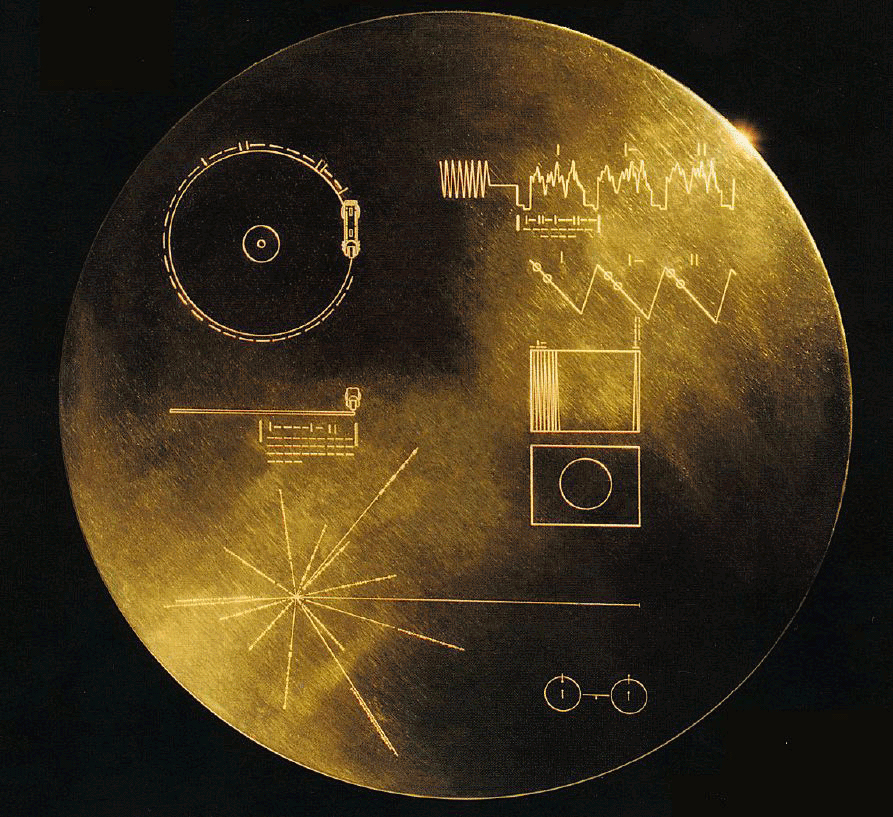
Should Humanity Try to Contact Intelligent Aliens?

Astronomers have detected nearly 2,000 alien planets to date. As that number continues to rise, so too does the prospect of finding intelligent extraterrestrial life.
In terms of the search for extraterrestrial intelligence (SETI), it may no longer be a matter of answering the "are we alone" question, some scientists say. Rather, just how crowded is the universe?
And if ET is out there, it may be possible to reach out with direct "radio waving" to potentially habitable exoplanets. This form of cosmic cryptography, called "Active SETI," involves no longer merely listening for a signal but purposefully broadcasting to, and perhaps establishing contact with, other starfolk. [13 Ways to Hunt Intelligent Alien Life]
Active SETI sounds like science fiction, but some astronomers are discussing it seriously today. The idea is, as it has been in the past, a controversial, hot-button issue, with some researchers wary of sending signals out to touch base with intelligent aliens.
Work in progress
"It’s a subject of discussion, I’ll put it that way," said Seth Shostak, senior astronomer at the SETI Institute in Mountain View, Calif. There have been many workshops and symposia over the years to discuss Active SETI, he said, and because it has a highly emotional component, "it’s like a third rail in a way," he said.
Shostak told Space.com that he feels the topic is not something to worry too much about.
Breaking space news, the latest updates on rocket launches, skywatching events and more!
"But there may not be that perception in the broader public … that we have discussed this to death. They haven’t seen these discussions nor participated in them," he said.
But exoplanet detections are making news around the world, Shostak said. "That’s putting the whole question of life in space in front of the public in a way that perhaps wasn’t true 20 years ago."
Still, trying to figure out what’s the best thing to do, in terms of Active SETI, is a work in progress, Shostak said. "What is the best way to communicate? What do you do…just ping them with a carrier wave and you encode Wikipedia? If you are going to do it, what’s the best way to communicate?"
Long shot
A few years ago, renowned British astrophysicist Stephen Hawking suggested that communicating with ET could be a threat to Earth.
While it’s likely alien life exists, Hawking said, a visit to Earth by other starfolk might turn ugly, akin to when Christopher Columbus landed in America. That didn’t turn out so well for the Native Americans, he said.
"Hawking stirred things up a few years ago saying we shouldn’t broadcast our existence because the outcome might be bad for us," said Chris Impey, deputy head of the astronomy department at the University of Arizona in Tucson. He co-edited the 2013 book, "Encountering Life in the Universe: Ethical Foundations and Social Implications of Astrobiology."
"He’s right about our immaturity as a species," Impey told Space.com, "but I think the argument is moot since intelligent civilizations are likely to be so sparsely distributed that communication in either direction is difficult or unlikely."
Active SETI, Impey said, "makes us feel a little more proactive, but I think it’s a long shot worse than buying a lottery ticket."
For Impey, the "promising approach" is not conventional SETI or broadcasting, but detection of civilizations by their energy or technology imprints, "and that avoids all the issues of intention and communication and the anthropocentric tangle people get into with that." [The Search for Intelligent Life: 4 Key Questions (Video)]
Great unsolved mysteries
Adding his voice to the Active SETI dialogue is Steven Dick, the Baruch S. Blumberg NASA/Library of Congress Chair in Astrobiology at the Kluge Center in Washington, D.C.
"I am for passive SETI programs, and in fact would advocate for renewed government funding after a 20-year lapse," Dick told Space.com. "That’s because the existence of extraterrestrial intelligence is one of the great unsolved mysteries of science.".
Dick said that the current NASA astrobiology hunt is centered on microbes, but surely there should be an effort to go beyond micro-organisms and search for complex life with whatever means are available.
"On the other hand, I would not propose government funding for messaging extraterrestrial intelligence. I think we need to find ET first, and then have a period where a team consisting of scientists, social scientists and humanities people consider what the message should be," Dick said.
Different alien minds
However, Dick is not at all sanguine that communication with ET is possible. He thinks we underestimate how different alien minds can be compared to ours — even their science and mathematics.
And that might account for the Fermi paradox, Dick said. That paradox, attributed to physicist Enrico Fermi, is the apparent contradiction between the high probability that extraterrestrial civilizations exist and the lack of contact with such civilizations. Hence, Fermi’s 1950 lunchtime query to colleagues: "Where is everybody?" [5 Bold Claims of Alien Life]
"Having said that, it would be very difficult to regulate individual or institutional projects that wish to attempt messaging extraterrestrial intelligence, and I would not advocate attempting to regulate," Dick said. In his opinion, there is an equal chance that ET will be good or bad.
"We do not yet know enough about the evolution of altruism on Earth, much less among other possible intelligent life forms, to say ETs will all be good," Dick said. "That is a hope rather than a fact."
Directed beam
But haven’t we already revealed ourselves with TV signals, military radar and other outputs into the cosmos? Even music is wafting across the universe, purposely directed toward a specific star.
That is true, Dick said, but it’s not the same as sending a directed beam to a habitable exoplanet target.
"Still, the idea of planet Earth cowering and afraid to engage the universe is not a planet I would want to live on. SETI attempts are part of our rising cosmic consciousness, and as such cannot be stifled," Dick said. "That this is the subject of such controversy…it’s an indication of how seriously the subject of intelligent life in the universe is now taken!"
Consequences of contact
"Yes, the issue should be re-debated," said Michael Michaud, author of the 2007 book, "Contact with Alien Civilizations: Our Hopes and Fears about Encountering Extraterrestrials."
Michaud is a former U.S. Foreign Service Officer for the U.S. Department of State and a long-time thinker and writer regarding the probability and consequences of coming into contact with an extraterrestrial civilization.
"Active SETI advocates broke with the conventional wisdom of the SETI pioneers, which was to listen but not transmit," Michaud told Space.com. "This change may have been driven by the impatience of younger SETI people after 40 years of unsuccessful searches."
"But Active SETI is not science," said Michaud. "It is an attempt to provoke a response from an alien society whose capabilities and intentions are not known to us."
Those most eager to send high-powered messages want their efforts to have consequences, Michaud said, not just for themselves, but for the entire human species. "There is no scientific or historical evidence telling us that the consequences of contact will be those they prefer."
Deliberate, powerful signals
Michaud says that an alien society able to detect our signals almost certainly would be more technologically advanced than our own, and might be capable enough and patient enough to send probes across light-years of space. Scientists and engineers have shown that robotic spacecraft able to reach nearby stars would be feasible for a civilization only slightly in advance of our own.
Michaud takes issue with the old claim that we already have been detected or that detection is inevitable. Experts have shown that the normal signals emitted by Earth are too weak to be heard at interstellar distances without colossal antennas, he said.
"Sending deliberate, unusually powerful signals is a decision that belongs properly with all Humankind," Michaud said. "We should have an open debate about whether or not to call attention to ourselves by making our civilization more detectable than it already is."
Leonard David has been reporting on the space industry for more than five decades. He is former director of research for the National Commission on Space and is co-author of Buzz Aldrin's 2013 book "Mission to Mars – My Vision for Space Exploration" published by National Geographic. Follow us @Spacedotcom, Facebook or Google+. Originally published on Space.com.

Leonard David is an award-winning space journalist who has been reporting on space activities for more than 50 years. Currently writing as Space.com's Space Insider Columnist among his other projects, Leonard has authored numerous books on space exploration, Mars missions and more, with his latest being "Moon Rush: The New Space Race" published in 2019 by National Geographic. He also wrote "Mars: Our Future on the Red Planet" released in 2016 by National Geographic. Leonard has served as a correspondent for SpaceNews, Scientific American and Aerospace America for the AIAA. He has received many awards, including the first Ordway Award for Sustained Excellence in Spaceflight History in 2015 at the AAS Wernher von Braun Memorial Symposium. You can find out Leonard's latest project at his website and on Twitter.


